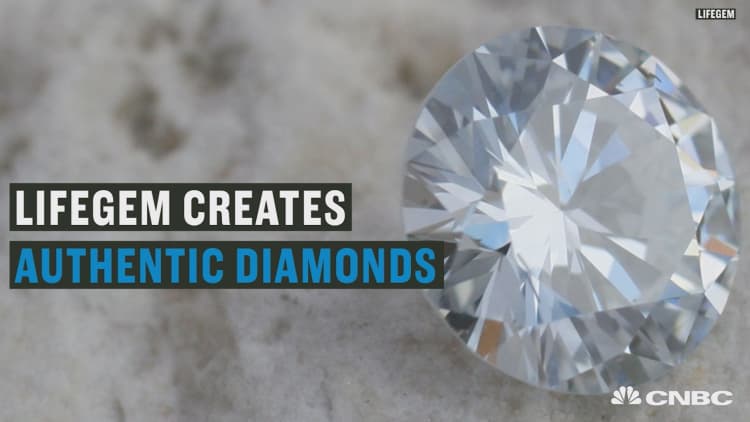More than a decade ago, the illicit diamond trade was among the most urgent of humanitarian causes, with governments and celebrities rallying around efforts to curtail their role in the world's jewelry supply.
The issue has largely faded from the spotlight in recent years, and wars that fueled the worst of the abuses across the African continent have mostly subsided. Yet some experts argue the battle is far from won, even in light of a range of initiatives designed to curtail the flow of stones moving into the $81 billion market, some of which come from regions still roiled by conflict.
Less than 20 years ago, human rights advocates hailed the Kimberley Process, where dozens of countries agreed to impose stiff requirements on diamond certification to ensure they were "conflict free," and prevent such stones from entering the pool of legitimate diamonds.
Today, the overwhelming majority of the world's diamond supply comes from stable countries. However, experts warn that in a handful countries torn by civil strife like Liberia and Sierra Leone, the illicit minerals trade is alive and well — and funding the activities of violent dueling factions.
In a 2015 study, the Enough Project said the main armed groups in the Central African Republic reap anywhere between $3 million and $6 million annually from blood diamonds that funds war operations.
Alice Harle, an expert on minerals from the nonprofit organization Global Witness, told CNBC recently that the "conflict diamond problem has not gone away. ... Companies sourcing diamonds originating in countries like Central African Republic and Zimbabwe may risk indirectly supporting violence," she said via email.
We don't know if the diamonds are coming from the Central African Republic where there is a war, or from artisanal mines in Sierra Leone where people are paid next to nothingIan Smilliechair, Diamond Development Initiative

The majority of the world's diamonds, at least 80 percent by some estimates, are mined in areas where there are no human rights concerns. Yet up to 20 percent are obtained through artisanal mining, a practice that employees around 1.5 million people that in fact contributes to environmental, health and human rights abuses.
Harle said that focusing a business in a particular geographical area, or on a particular type of stone, doesn't automatically insulate a company from human rights abuses associated with precious stones.
Along with the Kimberley Process, measures have been put into place to regulate the diamond industry, with the United Nations General Assembly passing a resolution in December 2014 to continue to work on breaking the link between armed conflict and illicit diamonds.
Jean-Marc Lieberherr, CEO of the Diamond Producers Association, told CNBC via email that the implementation of Kimberley has been effective, citing estimates that 99 percent of diamonds are Kimberley Process-compliant.
However, early champions of the process have turned away from it in recent years, including Global Witness and Ian Smillie, chair of the Diamond Development Initiative. Criticism of the Kimberley Process centers on the lack of compliance from participating governments, the narrow definition of "conflict-free" and loopholes in the process that continually allow conflict diamonds to pass into the hands of the consumer.
"The problem is that the Kimberley Process isn't really checking up on many of the countries where diamonds are produced. There have been and continue to be major smuggling operations," Smillie told CNBC.
"The governments of producing and recipient countries aren't cracking down on it. We don't know if the diamonds are coming from the Central African Republic where there is a war, or from artisanal mines in Sierra Leone where people are paid next to nothing," he added.
Precious stones from legitimate sources like Canada, Botswana or Russia "can easily be mixed" with conflict stones once they get sent to a sorting house in another region, Smillie said.
The exact definition Kimberley Process provides for a conflict diamond is one that has been "used by rebel movements to finance wars against legitimate governments."
Beth Gerstein, co-CEO of Brilliant Earth, a jeweler that sells both lab-grown and natural diamonds, believes that there should be a way to address other abuses such as exploitation and worker rights.
Yet Oren Sofer, a partner in Beny Sofer, a diamond dealer and jeweler in New York, believes that the difficulties in regulating the diamond industry are not isolated, and can be rectified by governments taking a more active role.
If governments don't accept "the recommendations made by the Kimberley Process, then we need to have penalties for noncompliance, but [the process] doesn't have them," said Smillie.

